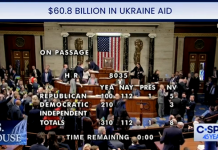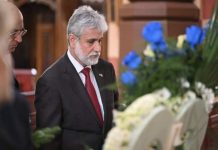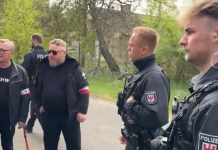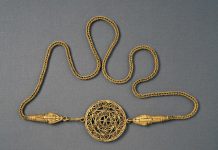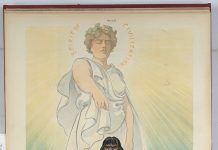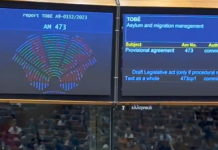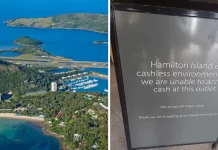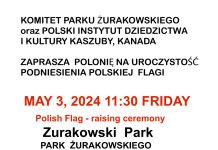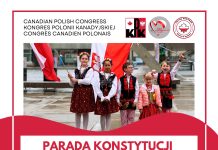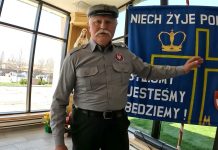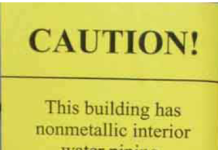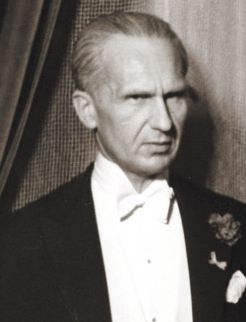In recognition of the merits of Polish diplomats saving Jews during World War II, on January 21, 2021, the Sejm (Lower House of Parliament) of the Republic of Poland declared 2021 the Year of the Ładoś Group. The Polish diplomatic mission in Bern led by Aleksander Ładoś, thanks to the passports of Latin American countries issued to Jews in German occupied Poland, could save the lives of at least 3,262 people. The entire operation, quite sensational, has only recently been discovered and described by Ambassador Jakub Kumoch.
As many as 30,000 Poles, including 5,000 Jews, owed their lives to Henryk Sławik, who was active in Hungary. Often called the Polish Wallenberg, he was later murdered in the German-Nazi concentration camp.
There were many more Polish diplomats involved in these rescue missions, and not only in Europe.
Polenaktion
Poland had already started saving Jews before the war. On October 26, 1938, the Germans issued an ordinance to expel all Jews of Polish origin from the Third Reich to Poland, regardless of their present citizenship. Over 17,000 people were taken to the border, and some were even chased through it. Poland accepted all of them in just a few days.
MS “Saint Louis”
The fates of the passengers aboard the MS “Saint Louis” show a completely different approach by some countries to the issue of rescuing refugees. Six months after the events on the Polish border, in May 1939, a ship with 937 German Jews on board leaves Hamburg for Cuba. However, after arriving in Havana Harbour, despite earlier declarations, Cuba declined all visitor visas and did not accept refugees. The ship then sailed to Florida. There, a flotilla of American ships stood in her way in case the Captain attempted to ground the ship. President Roosevelt refuses to accept this less than a thousand refugees for fear of having to support them. Captain Gustav Schroeder looks for the last chance in Canada, but here the ship is also denied landing. MS “Saint Louis” returns to Germany. But before she gets there, the governments of France, Belgium, the Netherlands and the United Kingdom issue permission to accept passengers. Only those who disembark in the last of these countries will survive.
Kaunas
The activities of the Japanese consul Chiune Sugihara in Kaunas, Lithuania, are quite well known. Thanks to the visas that he issued, nearly six thousand Poles (most of them Polish Jews) made their way to Japan. However, little is known about the role played by the Polish military intelligence, with which the Japanese consul worked closely, in this operation. Equally unknown is the contribution of the Polish ambassador to Japan, which “closed” the entire operation at its other end. Ambassador Tadeusz Romer obtained visas to Canada, Australia, New Zealand, Burma, the United States and Palestine (under British mandate) for over two thousand people.
In a digression from the historical record, the consulates general of Israel and Japan in Toronto jointly organized an event commemorating Consul Sugihara in 2019. A Japanese feature film (Polish co-production and cast) “Sugihara Chiune”, known in Poland as the “Ambassador of Hope”, was shown, as well as an exhibition presenting diplomats from various countries involved in saving Jews. The film clearly referred to refugees from Poland (occupied by both Nazi Germany and the Soviet Union), and the film clearly discussed the consul’s cooperation with a Polish intelligence officer. However, in speeches made by the organizers, all reference to Poland’s role was omitted nor did not contain a single biography of any Polish diplomat in the exhibition.
Wiktor Podoski in Canada
The actions taken by Polish diplomacy in Canada are perhaps the least known.
From November 1939, the experienced diplomat and officer Wiktor Podoski was the consul general in Ottawa. He was born on April 2, 1895 in Wołyń (Volhynia). Podoski’s family was from the landed gentry and bore the Junosza coat of arms. After graduating from gymnasium in Warsaw, he went to study in Great Britain. He studied at the Royal Technical College and later at the London School of Economics and Political Science. He managed the post in Ottawa as the Consul General of the Republic of Poland until March 27, 1942. It was then that the Consulate General was transformed into the Legation and Wiktor Podoski was appointed the first Minister of the Republic of Poland to Canada. Prime Minister General Władysław Sikorski personally participated in the ceremony.
Saving refugees from Poland
Throughout his mission in Ottawa, Wiktor Podoski had been seeking permission from the Canadian authorities to receive refugees from Poland. In a letter dated June 24, 1940 to the Secretary of State for Foreign Affairs (who was also the Prime Minister of Canada) William Lyon Mackenzie King, it lists the number of two thousand Poles. In doing so, he refers to the instructions of the Polish government received from London. On July 11, the Polish consul sends another letter to King, in which, referring to his previous letter, he advises that two Polish ships, MS “Lewant” and MS “Batory” are carrying the families of Polish government and military officials to Canada. The passengers have been issued Canadian visas or special authorizations from the High
Commissioner of Canada in London. In this letter, the Polish consul also asked for the exemption from customs clearance of passengers and the entire cargo of the “Batory”, which was carrying boxes with Wawel Castle treasures and the secret archives of the Polish government.
150 children on their way to Canada
There were 24 passengers on board the MS “Lewant”, and on the MS “Batory” 18 family members of the Polish generals and a group of about 150 Jewish children aged six to fourteen.
The Canadian government, in response to applications submitted by consul Podoski, agreed to accept 1,000 instead of 2,000 refugees from Poland. The Polish government was also required to cover the costs of transport and pay the living costs of these people in Canada. The big challenge for our diplomat was the necessity to negotiate with the director of the Immigration Branch of the Mines and Resources Department in King’s government, who was Frederick Charles Blair, known for his anti-immigrant attitude. Blair was central in denying permission for the MS “St Louis” to land in Canada, for which his nephew apologized for in 2000.
At the same time, Wiktor Podoski participated in the implementation of the agreement on bringing over 400 Polish engineers and technicians to Canada to work in the arms industry. Most of them were still in occupied France, some already in Great Britain. Our specialists were of course “loaned out” only for the duration of the war because that was the need of Canadian industry.
Polish Jews in Japan
On April 23, 1941, the Canadian government, at the request of Podoski, considered the possibility of accepting 450 refugees from Japan and 300 from Portugal. After discussion, the government agreed to the “Portuguese” group, but with the proviso that its arrival would be within the already agreed quota of 1,000 people.
Consul Podoski informs Norman Robertson from the chancellery of the Canadian Ministry of Foreign Affairs that Polish refugees in Japan (mainly Jews) should urgently leave Japan. The Canadian government agrees to accept 75 people from Japan (still, of course, within the agreed thousand). But there were already 2,000 waiting for such a possibility. At that time, Brazil decided to take this number from Portugal, without any financial conditions. Podoski asks if Canada cannot afford such a gesture. The Canadian Embassy in Japan by mistake issues 120 instead of 75 visas. Blair does not hide his irritation and asks Podoski not to inform Jewish organizations about it, because they might think that Canada will open the door to wider immigration. The first 18 of this group arrived in Vancouver on June 18, 1941. The costs are borne by the Sikorski government and the Federation of Polish Jews. Consul Podoski intervenes with Blair in the case of rabbis and their students, none of whom have obtained a visa. Blair is opposed (he does not see such a need in Canada), so the next official to whom the Polish consul goes is Hugh Keenleyside, First Secretary at the Ministry of Foreign Affairs. At the same time, Podoski prompts the Canadian Jewish
Congress to assure the government that they are establishing a special center in Montreal for rabbis and students from Japan.
Successful (partially) evacuation
In early September 1941, the Canadian government sends instructions to the embassy in Tokyo. The latter, in turn, contacts the Polish ambassador immediately. Podoski sends a named list to Kobe and 80 students travel to Shanghai, from where they are to travel to Canada. For religious reasons (Yom Kippur), some of them stop their journey and decide to sail from China on another ship. As a result of this, only 29 people arrive in Vancouver on November 2, 1941. The next ship never arrives, because war breaks out between the United States and Japan. As a result, of this remaining group, only four people arrive in Canada five years later.
Podoski continues to intervene in the case of the thousands of Polish Jews in the Far East. Blair replies that bringing a thousand would be useless, since 22 thousand would stay there anyway. Jewish organizations in Canada were resentful not only toward Canadian authorities, but also against the Polish consul, alleging that Podoski did not do enough for them. Podoski flatly rejects these allegations, pointing out that, contrary to the expectations of the Allies, few of these rescued men join the armed forces. Nevertheless, in a report sent on June 17, 1941, Consul Podoski wrote that Polish Jews who came from Japan reported to the Polish Army in Canada.
An attempt at a rescue mission in France
After the roundups by the Vichy authorities intensified, on September 21, 1942, Minister Wiktor Podoski, on behalf of the Polish Government, asked Canada to issue visas to Polish Jews residing in France. This would help them obtain asylum in Portugal or Switzerland. There is consent and preparations are underway. The logistics of the plan are developed in Portugal. In Canada Jewish organizations are ready to receive a thousand children. However, in November 1942, the Germans enter the Vichy zone, and the evacuation plan collapses.
Coordinated actions
Using Canada as the example, I have indicated that the involvement of Polish diplomacy during the Second World War to save refugees, including to a large extent Jews, is still a very little-known issue. Ample evidence exists that this activity was carried out on a large scale. Moreover, it was driven and coordinated by the Government of the Republic of Poland in London.
The figure of Wiktor Podoski requires a separate and detailed examination of his activities. First, the Consul General, then the Minister of Poland to Canada (head of a Legation), was an exceptional diplomat. In addition to continuous activities throughout the entire period of World War II for the benefit of refugees, he also played a key role in the establishment of the Polish Military Mission in Canada in 1941 and the associated Recruitment Center in Windsor and the Tadeusz Kościuszko Training Camp in Owen Sound. After the war, he returned from London to Canada and here, after years of Polish community activity, he died on August 2, 1960. He is buried in Ottawa.
Krzysztof Grzelczyk, Toronto, April 2021
While writing this article, I used the following studies:
– I. Abella and H. Troper, None is too many: Canada and the Jews of Europe 1933-1948, University of Toronto Press, Toronto, 2013
– S. Moćkun, The importance of the Polish soldier’s uniform in cultivating tradition and patriotism among the Canadian Polish community, Latest History, 2019
– S. Schwinghamer, The Pier Goes To War: Halifax’s Pier 21 and the Second World War, Canadian Museum of Immigration at Pier 21
– Diaspora – The Birth of Polish Emigration to Canada 1940-1960, www.polishwinnipeg.com
– Rescue in the Holocaust by Diplomats, www.holocaustrescue.org/diplomatic-rescue-part-3
– Wiktor Józef Podoski (1895-1960), Scientific Institute of Oskar Halecki, Ottawa


